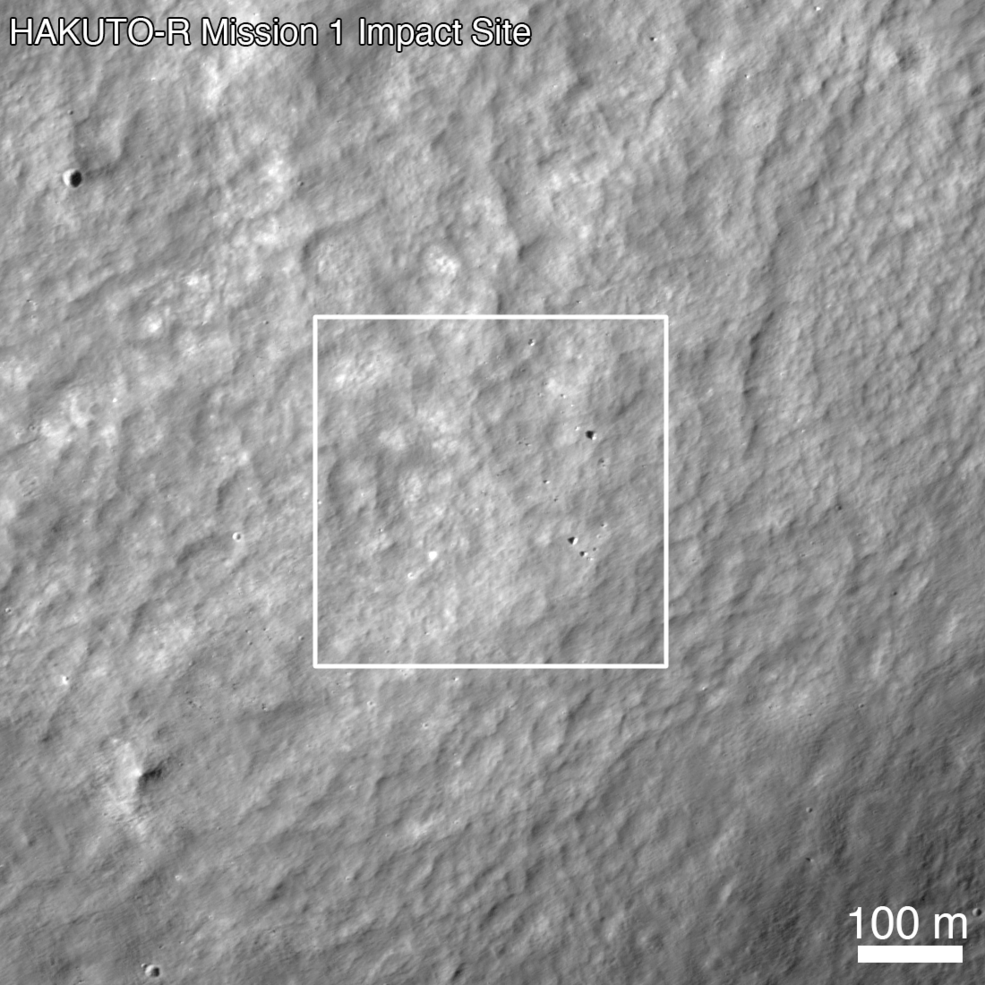
HAKUTO-R Mission 1 lunar lander site, as seen by the Lunar Reconnaissance Orbiter Camera (LROC) on April 26, 2023. / NASA's Goddard Space Flight Center/Arizona State University
HAKUTO-R Mission 1 lunar lander site, as seen by the Lunar Reconnaissance Orbiter Camera (LROC) on April 26, 2023. / NASA's Goddard Space Flight Center/Arizona State University
NASA on Tuesday revealed images captured by its Lunar Reconnaissance Orbiter (LRO) that shows debris scattered on the moon at the planned landing site of ispace's lunar lander.
The Japanese space startup ispace launched its first moon lander Hakuto-R Mission 1 in 2022 and attempted to land on April 25. The company then announced the mission had failed after losing contact with the lander when it unexpectedly accelerated and probably crashed on the lunar surface.
In a following press meeting the startup's chief technology officer said the lander's altitude measurement system had miscalculated the distance to the surface as it approached the moon.
On April 26, LRO acquired 10 images around the planned landing site with its Narrow Angle Cameras (NACs), and the Lunar Reconnaissance Orbiter Camera (LROC) science team went on to analyze the surface change around the region.
From the change of brightness in pixels, the team identified at least four prominent pieces as parts of the lander body and small craters created by the impact.
The site will be further analyzed over the coming months as the LRO has the opportunity to make additional observations of the site under various lighting conditions and viewing angles, NASA said.